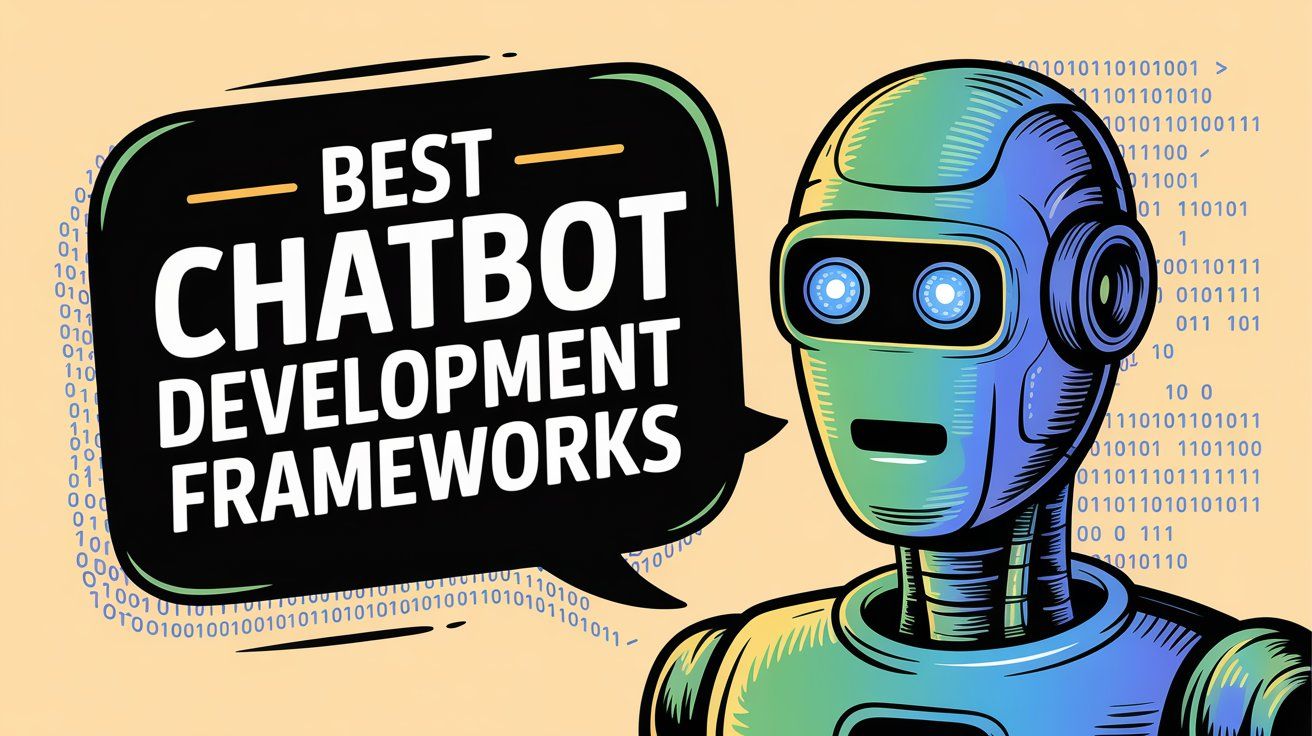
Best Chatbot Development Frameworks: Complete Guide (2025)
Discuss with AI
Get instant insights and ask questions about this topic with AI assistants.
💡 Pro tip: All options include context about this blog post. Feel free to modify the prompt to ask more specific questions!
TL;DR: Building a chatbot in 2025? You'll choose between coding-heavy frameworks (like Rasa) for maximum control, or user-friendly platforms (like Spur) that deploy actionable AI agents across WhatsApp, Instagram, and live chat without writing code. This guide breaks down 9+ frameworks, the rise of AI agent systems, and how to pick the right solution for your business. Try Spur free for 7 days to see actionable AI in action.
Chatbots aren't trendy anymore. They're essential infrastructure for modern customer engagement.
Over 67% of global consumers interacted with a chatbot at least once in the past year, and the global chatbot market's projected to hit $9.5 billion in 2025 (up from $7.8B in 2024), growing around 23% annually.
Most businesses discover this too late: picking the wrong chatbot development framework can cost you months of dev time, thousands in wasted budget, and frustrated customers dealing with a bot that can't actually do anything useful.
Critical insight: The framework you choose today determines whether your chatbot becomes a competitive advantage or a technical debt nightmare.
Maybe you're a tech team evaluating whether to code something custom with Rasa, or a marketing director who needs a bot deployed on Instagram yesterday but doesn't have engineering resources. Either way, you're probably asking: What exactly is a chatbot framework, and how do I choose one that won't become a regret?
This guide answers that. We'll break down what chatbot frameworks actually are (spoiler: they're very different from no-code platforms), explain why some require a PhD in Python while others work out-of-the-box, review the top 9+ frameworks with honest pros and cons, explore the new wave of AI agent frameworks that can take actions instead of just answering questions, and give you a decision framework to confidently pick the right tool.
By the end, you'll know whether you need a heavyweight developer framework or a ready-to-deploy solution like Spur that handles WhatsApp automation, Instagram DM qualification, and actionable AI customer support without writing a single line of code.
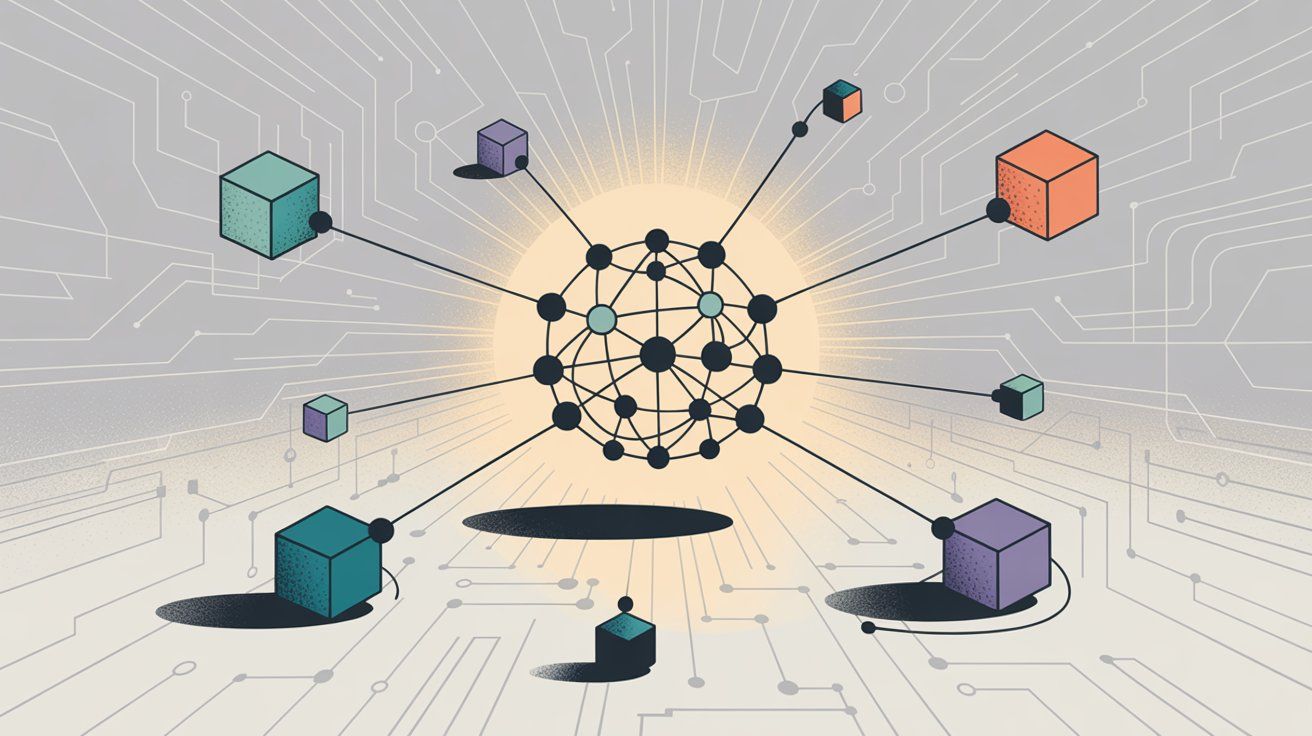
A chatbot development framework is a developer-oriented toolkit that provides the building blocks to create conversational agents. Think of it like React or Django for chatbots.
Unlike plug-and-play chatbot platforms aimed at marketers, frameworks are designed for developers and engineers who need code-level control over bot logic, integrations, and behavior.
In essence, a framework gives you a preset bot structure (APIs, SDKs, sometimes a UI) that you customize and extend through programming. You're building the bot from the ground up, which means infinite flexibility but also significant engineering investment.
This distinction matters because people constantly confuse the two:
Type | Technical Requirement | Flexibility | Examples |
|---|---|---|---|
Chatbot Frameworks | Requires coding and technical expertise | Maximum flexibility and ownership | Rasa, Microsoft Bot Framework |
No-Code/Low-Code Platforms | User-friendly interfaces, no programming | Limited to platform features |
Frameworks require coding and technical expertise, but give you maximum flexibility and ownership. You deploy them on your own servers, integrate with any system, and modify the source code to fit your needs.
No-Code/Low-Code Platforms offer user-friendly interfaces and quick setup without programming, but you're constrained by the platform's features.
As one industry guide puts it: if you have skilled developers and need fine-grained control, frameworks like Rasa are great. If your team consists of marketers or non-coders, a hosted platform or visual builder might be more practical.
The bottom line: Frameworks = more power, more effort. Platforms = ease of use, less flexibility.

Many chatbot development frameworks are open-source, meaning their source code is publicly available to use and modify freely. Open-source frameworks (Rasa, BotKit) let you avoid vendor lock-in and own your data and code completely.
Proprietary or closed-source frameworks (often offered as cloud services like Dialogflow or Amazon Lex) don't expose their code but provide hosted solutions and often easier initial setup.
Both types can be viable. The decision comes down to your requirements for data control, hosting preference, and how much you want to customize.
Given the rise of easy bot-building tools, why would a team choose a development framework and invest in coding a bot? Here are some compelling reasons:
Frameworks allow you to design every aspect of the chatbot's behavior. You're not limited to pre-defined templates. You can craft custom conversational flows, integrate unique business logic, and fine-tune AI models.
For example, open-source frameworks like Rasa give you full access to the code, so you can add new features or modify how the bot understands language.
Most frameworks have robust APIs and libraries to connect with your databases, CRM/ERP systems, or external APIs. This means your bot can perform actions like looking up order status, booking appointments, or triggering workflows.
This is what Spur calls "Actionable AI" rather than just Q&A. A custom-built framework bot can seamlessly hook into anything your business uses.
The integration advantage: Modern chatbot frameworks let your bot do things, not just say things. The difference between answering "Where's my order?" and actually looking it up is everything.
For example, Spur's platform integrates directly with Shopify, WooCommerce, Razorpay, and more to enable bots that can track orders, recover abandoned carts, and update customers on shipping status.
Frameworks often support deploying the chatbot across many channels (web chat, mobile apps, WhatsApp, Facebook Messenger, Slack, etc.) via connectors or adapters.
For instance, the Microsoft Bot Framework provides connectors for dozens of channels out-of-the-box. This saves you from writing channel-specific code from scratch and ensures a consistent experience everywhere.
Similarly, Spur deploys AI agents across WhatsApp Business API, Instagram, Facebook Messenger, and live chat from a unified interface, without requiring separate development for each channel.
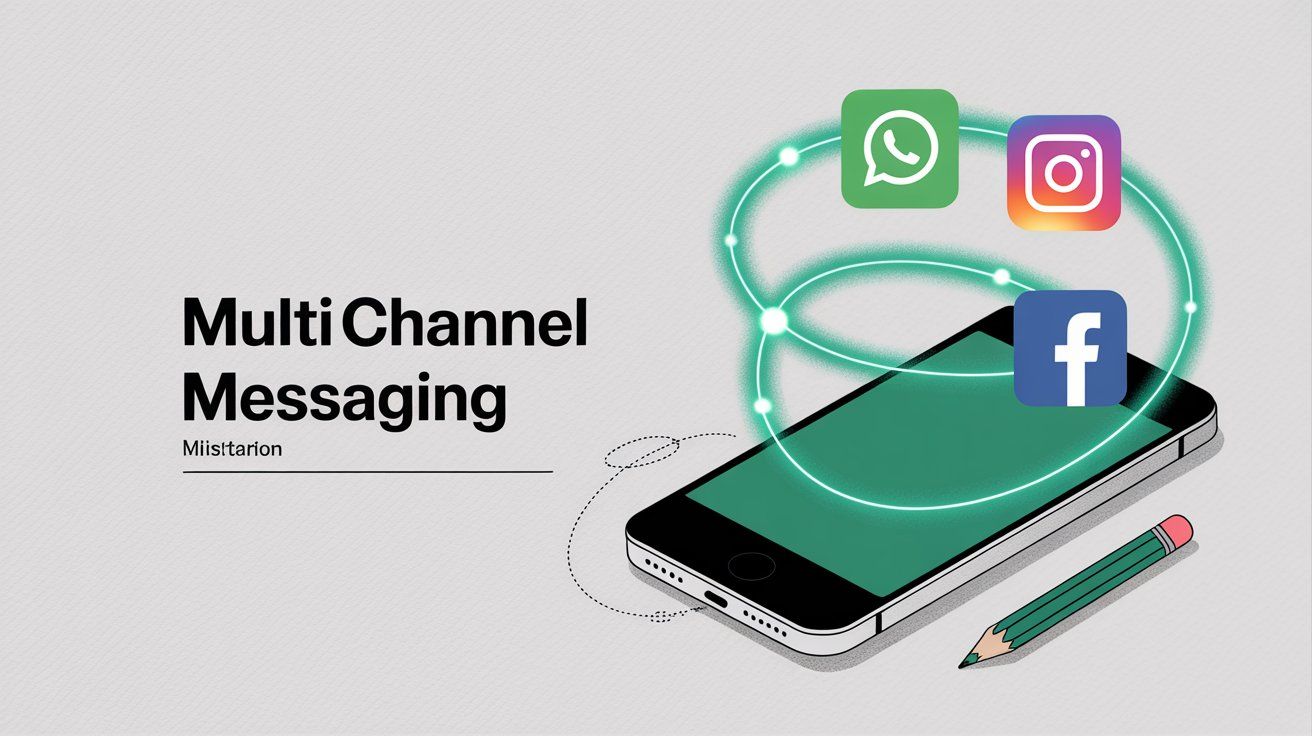
With an open-source framework, you host the bot and retain full ownership of the data and conversation logs. This is crucial for companies with strict data privacy needs or compliance requirements.
You're not sending customer conversations to a third-party SaaS in the cloud. Everything can live in your controlled environment. Many enterprises prefer this route for sensitive use cases (finance, healthcare, etc.).
Popular frameworks have active communities, plugins, and extensions. You can use community-built modules for common functions (like a connector to a messaging app, or an integration to an NLP service) rather than reinventing the wheel.
Strong documentation and forums mean you can find solutions to problems more easily. Frameworks come with an ecosystem that can speed up development.
Using a framework isn't always the best choice. If you need a simple bot up quickly (like a basic FAQ chatbot) and don't have developer resources, a no-code platform or chatbot-as-a-service might get you there faster.
The trade-off is less flexibility. You might hit a wall if you later want a feature the platform doesn't support.
A good middle ground some businesses take is starting with a platform to validate the concept, then moving to a custom framework build as their needs grow complex. Or, they use platforms like Spur that bridge the gap by offering both no-code visual builders and powerful custom AI actions via webhooks and API connections.
Think practically: Start where you are, not where you think you should be.
Not all chatbot frameworks are alike. They vary in the technologies and AI techniques they use under the hood. Understanding the general categories will help you make sense of the landscape:
Framework Type | How It Works | Best For | Limitations |
|---|---|---|---|
Rule-Based | Predefined rules and decision trees | Simple, predictable flows | Can't handle unexpected input |
AI/NLP | Machine learning for intent detection | Natural conversations | Requires training data |
LLM-Based | Large language models generate responses | Complex, open-ended queries | Potential hallucinations |
Voice-Focused | Speech recognition integration | Phone systems, voice assistants | Platform-dependent |
These frameworks rely on predefined rules or decision trees. They often use if-else logic or keyword matching to determine responses.
Older frameworks and DIY libraries, or specialized ones like AIML (Artificial Intelligence Markup Language, used by Pandorabots), fall here. They're deterministic and easier to test but can feel rigid.
Menu-based bots (which present buttons or options to click) are a subset of these. They work for simple flows (like "Press 1 for sales, 2 for support") but can't handle free-form input well.
Most modern popular frameworks incorporate Natural Language Processing (NLP) and machine learning. These allow the bot to understand intent behind user messages and handle more varied, natural language input.
Google Dialogflow, Microsoft Bot Framework (with LUIS), Rasa, IBM Watson Assistant, Amazon Lex, Wit.ai all use NLP engines to parse user utterances into structured intents and entities. They enable contextual conversations rather than one-and-done Q&A.
Some frameworks in this category use machine learning models you can train on example phrases (intents), while others use powerful pre-built language understanding (like Google's models behind Dialogflow).
The latest wave (2023 onwards) is frameworks that integrate Large Language Models (LLMs) like OpenAI's GPT-4, Google PaLM, Anthropic Claude, etc. to generate responses dynamically.
Traditional frameworks required defining pretty much all possible replies or using ML classifiers to choose a scripted response. LLM-based bots, by contrast, can produce answers on the fly from a knowledge base or through trained neural networks.
This category includes new libraries and tools like LangChain (a framework for building applications powered by LLMs), and OpenAI's API which many developers now use directly to create conversational agents.
Established frameworks are also adding LLM capabilities. For example, Rasa 3.x allows plugging in transformer-based response generation.
Platforms like Spur use multiple LLMs (OpenAI, Claude, Gemini, Grok) to power their actionable AI agents that can understand customer queries, access knowledge bases, and execute actions like order tracking or appointment booking.
Some frameworks are specialized or particularly strong in voice interactions (ASR/TTS integration). Google's Dialogflow, Amazon Lex, and Microsoft's Bot Framework all support speech input/output (using their cloud speech services).
There are also specific voice bot SDKs (for building Alexa Skills or Google Assistant actions) but those are often separate from general chatbot frameworks. If voice is a requirement, look for frameworks with robust speech recognition and text-to-speech support out-of-the-box.
Most leading frameworks today combine elements of these categories. For instance, Dialogflow uses both ML-based intent mapping and can plug into Google's LLM for more open-ended queries. IBM Watson Assistant uses a mix of rule-based dialog and AI. Rasa allows rule-based stories as well as ML policies.
The lines are blurring as frameworks evolve.
We'll dive into some of the best-known chatbot frameworks as of 2025. For each, we'll provide an overview, highlight key features, and discuss ideal use cases along with honest pros and cons.
This list isn't exhaustive, but it covers the major players and popular choices for a variety of needs.
Microsoft's Bot Framework is a comprehensive SDK and set of tools for building conversational bots, tied into the Azure ecosystem. It's a mature framework (launched in 2016) and is widely used in enterprise settings.
Feature | Description |
|---|---|
Languages & SDKs | C# and Node.js SDKs, plus Bot Framework Composer for visual dialog design |
NLP Integration | Seamless integration with LUIS and Azure Cognitive Services, or plug in your own NLP |
Multi-Channel | Deploy to Skype, Teams, Slack, Facebook, Telegram, SMS, web chat, and more via connectors |
Enterprise Ready | Azure-grade security, scaling, monitoring, and integration with Azure services |
Open Source Core | Bot Builder SDK is open source on GitHub with active community contributions |
What Works Well:
• Rich ecosystem and tooling (Composer, Emulator for testing, Azure Portal integration)
• Huge community and Microsoft support with many examples and templates
• Connectors for virtually every channel, plus custom adapter capability
• Can build very sophisticated bots with complex dialogs, supports integrating Generative AI (Azure OpenAI service)
• Free to use the SDK. You pay only for Azure resources. Azure Bot Service provides 10,000 messages/month free on standard channels
Watch Out For:
Steeper learning curve if you're not already familiar with Microsoft's development stack. Non-.NET developers might prefer other frameworks, though the Node SDK helps.
Azure dependency: Running it on Azure is easiest. While you can self-host the bot logic, you might still rely on Azure for some services. LUIS NLP cannot be run on-premise.
Documentation overwhelm: While extensive, the docs can be overwhelming given the number of moving parts. Debugging across Azure Bot Service + your code + channel connectors can get complex.
Ideal Use Cases: Large organizations building enterprise-grade bots like an internal HR assistant deployed on Teams, or a customer support bot that needs to live in multiple channels. If you need reliability, scaling, and have Microsoft/Azure expertise, this framework is a top choice.
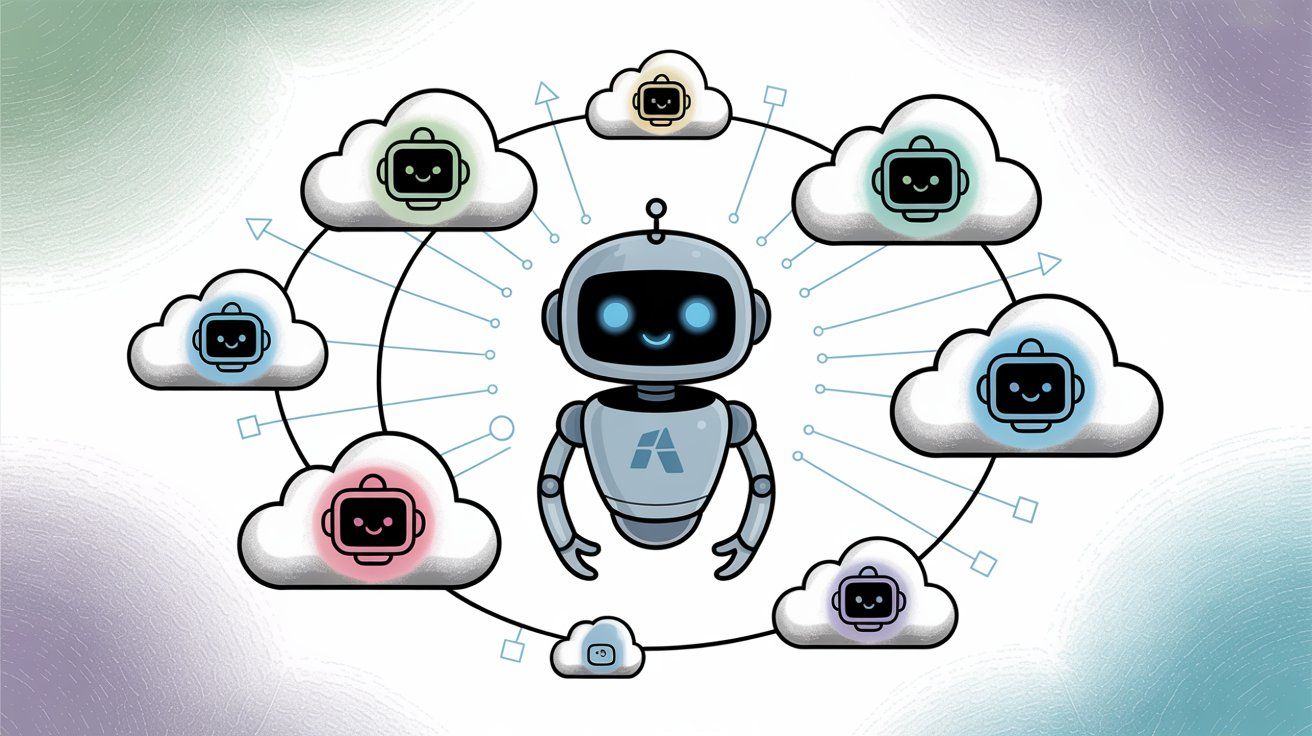
Google Dialogflow (part of Google Cloud) is one of the most popular cloud-based chatbot frameworks. It provides a powerful natural language engine and a relatively user-friendly interface to design conversations.
In 2025, Dialogflow comes in two versions: Dialogflow CX (for advanced, multi-turn rich conversations) and Dialogflow ES (the standard version for simpler bots).
Natural Language Understanding: Powered by Google's machine learning. Dialogflow excels at intent detection and entity extraction across 20+ languages natively, making it great for global deployments.
Voice and IVR Support: Dialogflow can handle text or voice input. It's behind Google Assistant's conversational ability and can integrate with telephony for phone bots.
Multi-Platform Integration: It offers one-click integration with platforms like Messenger, Telegram, Slack, Twilio SMS, and others. Your bot can be on multiple channels with minimal custom code.
Fulfillment & Webhooks: You can connect your Dialogflow agent to your own backend via webhooks for dynamic responses (like looking up an order in your database when a user asks "Where's my package?").
Dialogflow CX Visual Builder: The CX version provides a flowchart-style visual builder to design stateful conversations which is very powerful for complex use cases.
Strengths vs. Limitations:
What Makes It Strong | What to Watch |
|---|---|
Non-developers can use the UI to define intents | Cloud-dependent (no on-prem or offline mode) |
High accuracy intent matching with Google's ML | Costs add up for high-volume bots ($0.007/request) |
Integrates seamlessly with Google ecosystem | Limited support on free tier |
Google handles scaling and maintenance | Complex flows can require custom fulfillment code |
20+ languages supported natively | Must send conversation data to Google's servers |
Ideal Use Cases: Customer-facing bots that require sophisticated understanding in multiple languages. For example, a multilingual customer support chatbot on your website, or a voice bot for a call center IVR. Great for prototyping AI interactions quickly. If you're already on Google Cloud or need tight integration with Google Assistant or other Google services, Dialogflow is a natural choice.
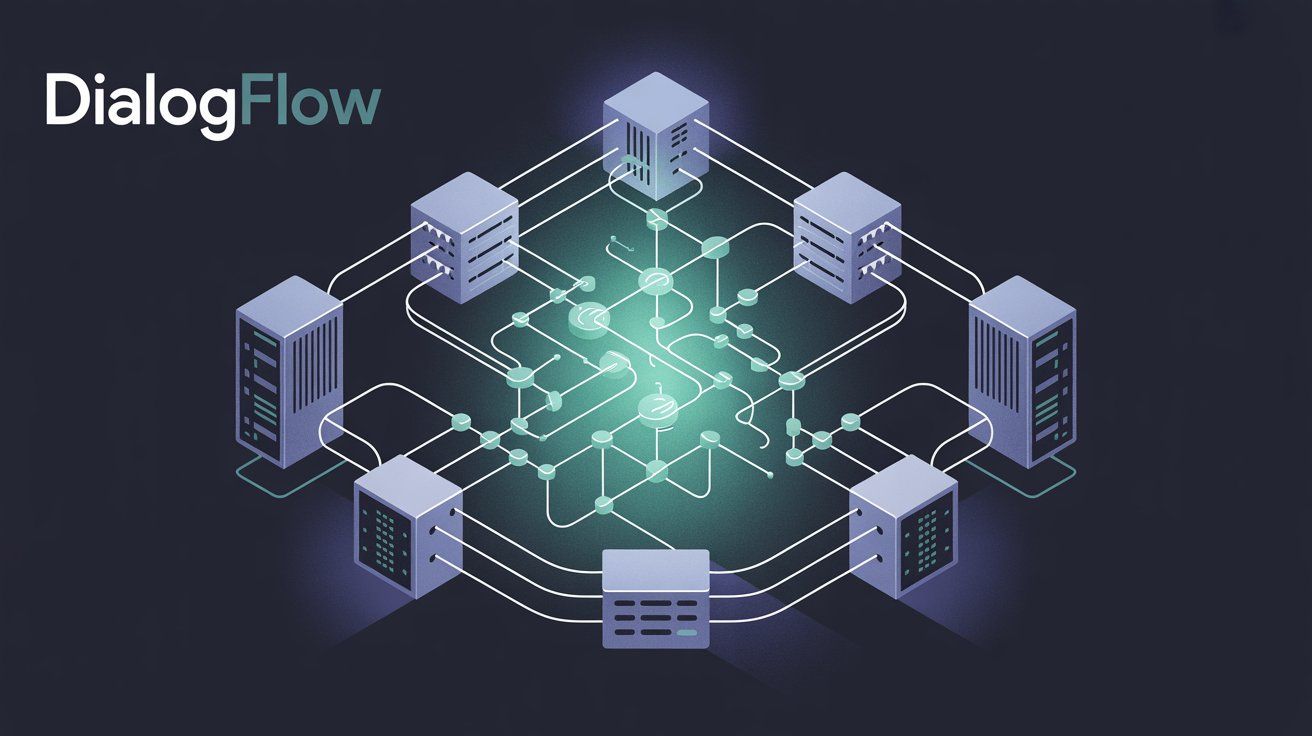
Amazon Lex is AWS's conversational AI service, offering the technology that powers Alexa for building chatbots. It's a fully managed service where you create your bot on AWS and Amazon handles the NLP and scaling.
① Native Speech Processing: Lex handles speech recognition and synthesis out-of-the-box. It converts voice audio to text, understands intent, and replies with generated speech. Perfect for voice-enabled chatbots.
② Omnichannel Deployment: Deploy to Facebook Messenger, Slack, Kik, Twilio SMS, and more. AWS provides ready-made connectors so you don't build from scratch.
③ Deep AWS Integration: Trigger AWS Lambda functions on specific intents, connect to DynamoDB, integrate with other AWS services seamlessly. If your stack is already on AWS, this is incredibly convenient.
④ Serverless Scaling: Lex automatically scales to handle incoming traffic. No server provisioning needed. You focus on bot logic, AWS handles infrastructure.
⑤ Multi-Turn Conversations: Supports dialog management with slot filling. The bot can prompt users for missing information naturally.
Pros:
• Great for Voice Bots: Lex natively handles ASR/TTS, saving you from integrating a separate speech service
• Beginner-Friendly Console: AWS Management Console for Lex provides a step-by-step bot builder with GUI
• Secure and Enterprise-Ready: AWS's security and compliance standards apply to Lex
• Pay-per-use pricing: No upfront costs. You pay ~$0.00075 per text request and $0.004 per speech request
Cons:
Limited Language Support: As of 2025, Amazon Lex primarily supports English (and a few variants). It's been slowly adding more languages, but it still lags behind Dialogflow or Watson in multi-lingual capabilities.
Less Flexible NLP: Lex's intent classification works, but some developers find it less flexible or less accurate out-of-the-box compared to Google or Rasa. You can't use custom NLP models.
AWS Lock-In: Using Lex means you're tied into AWS's ecosystem. You can't run Lex offline or on another cloud.
Cost at Scale: The per-request pricing can become pricey at very large scale. For example, 1 million text messages would cost about $750 on Lex.
Ideal Use Cases: Scenarios where voice-interaction is needed (Alexa-like experiences, voice customer service bots). Also suitable if your stack is already on AWS. Lex is a good choice for straightforward bots that benefit from speech capabilities and AWS integrations.
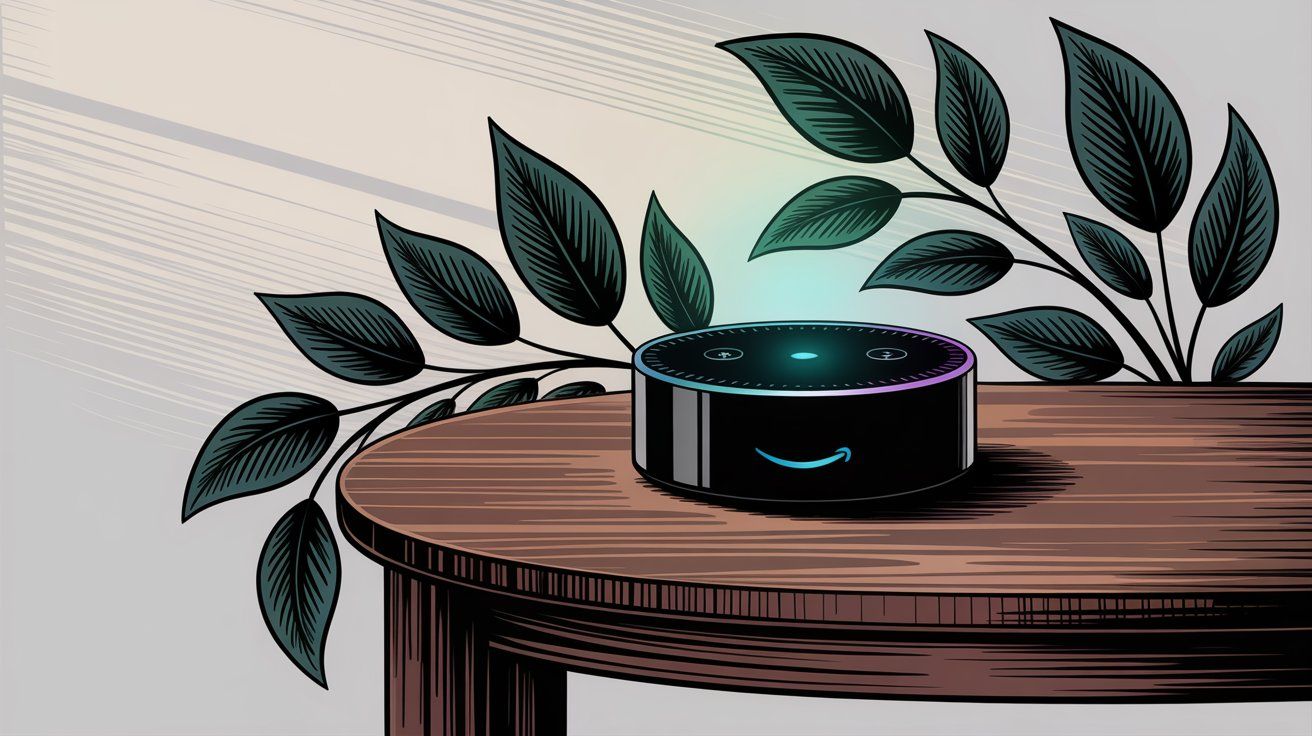
IBM Watson Assistant is an AI-driven chatbot framework from IBM, known for its earlier win on Jeopardy and a strong enterprise focus. It allows businesses to build chatbots with IBM's machine learning and comes with robust features for large deployments.
Machine Learning & NLP: Watson uses advanced ML models trained on a large corpus (including a billion Wikipedia words in its early iterations). It supports intent detection, entity recognition, and dialog context management.
Dialog Editor: Watson Assistant provides a visual dialog builder interface where you can define conditional responses, slot filling, and context variables to handle complex, branching conversations.
Search Skill and Actions: IBM introduced "search skill" integration where the assistant can be connected to an internal knowledge base or documents and use an information retrieval approach to answer FAQs.
Multichannel + SDKs: You can deploy Watson Assistant to web chat, messaging apps, or even voice channels. It provides integration connectors and SDKs (Node, Python, Java, etc.).
Focus on Privacy and Security: IBM heavily touts its data privacy. Your Watson Assistant data can be isolated. IBM promises your data and AI models are not used to train others. It includes features like visual recognition security where it isolates data in a private cloud.
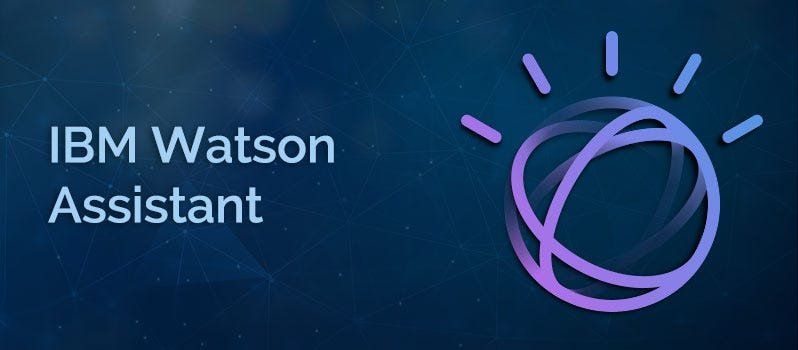
Why Teams Choose Watson:
→ Enterprise-grade intelligence: Features like disambiguation (asking clarifying questions), intent insights (learning from real conversations), and integration with IBM's AI portfolio
→ Serious about privacy: IBM's strict data policies and private hosting options appeal to highly regulated industries
→ Multi-language ready: Create assistants in multiple languages from one interface
→ Free entry point: Lite plan available to test before committing
Where It Gets Tricky:
→ Steep learning curve for new users. The power comes with complexity.
→ Higher cost than alternatives. Plus plan starts at ~$140/month, enterprise pricing significantly higher.
→ Smaller dev community compared to open-source frameworks like Rasa.
→ IBM Cloud dependency for standard deployment (on-premise only for enterprise IBM Cloud Pak customers).
Ideal Use Cases: Fortune 500 companies, banks, airlines, healthcare giants. Anyone needing a highly reliable, secure chatbot with advanced AI features. Watson is used for things like banking virtual assistants, insurance claims bots, and other high-stakes applications. It's likely overkill for a small startup or a simple customer service bot, but it shines in complex, large-scale deployments.
Rasa is a leading open-source chatbot framework that has gained huge popularity among developers. Written in Python, Rasa provides a dual framework: Rasa NLU for understanding language, and Rasa Core for dialog management. Together they let you build very custom conversational agents. It's free to use and modify (Apache 2.0 license), with an enterprise offering for support and extra tools.
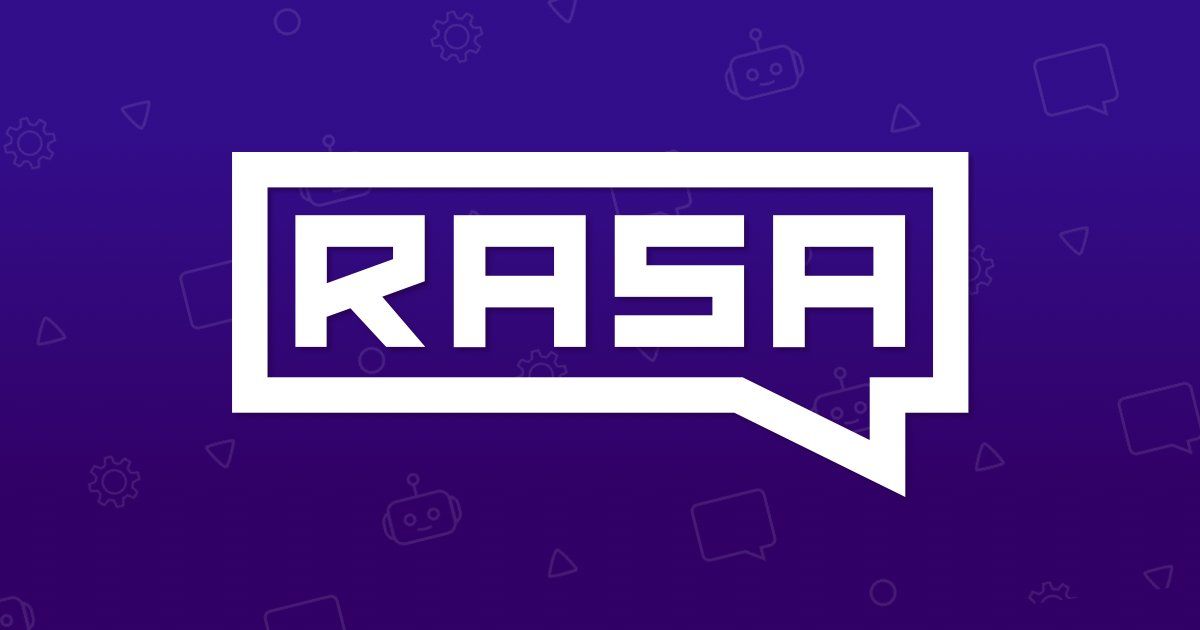
Open-Source and Local ML: Rasa lets you train your own NLP models on your data. It doesn't rely on cloud APIs for understanding intents. Everything can be done on your machine or server. Great for privacy and for tailoring language understanding to your domain.
Stories and Dialogue Management: With Rasa Core, you define training stories which are example conversation flows. Rasa uses these to learn how to manage dialogue using machine learning policies. This allows for contextual, multi-turn conversations that can handle branching paths.
Custom Actions: Rasa easily integrates with custom code for actions. If a user asks something that requires an API call or database query, you can create a Python action server that Rasa will call to fetch data and formulate a response. This makes it actionable.
Multi-Channel Connector: Rasa provides connectors to channels like Slack, Facebook, Twilio, Microsoft Bot Framework, etc. You can deploy one Rasa bot across several channels by configuring these connectors.
Extensibility: Almost every part of Rasa can be extended or swapped out. Don't like the default NLU? Use spaCy or HuggingFace Transformers. Want a different policy for dialogue? Write a custom one.
The Rasa Advantage:
• Complete control and ownership: You own everything. The training data, the models, the conversation logic. No third-party data sharing. Deploy on-prem or private cloud. If data privacy is paramount, this is your framework.
• Powerful customization: Handles very complex use cases by combining programmatic logic with machine learning. You get the best of both worlds. Built-in analytics possible with Rasa X or Enterprise dashboards.
• Active developer community: Global community with forums, examples, and pre-built templates. You're never alone when you get stuck.
• Zero licensing costs: Free and open-source. No recurring API fees. Your investment is developer time and infrastructure, not subscription bills.
The Trade-Offs:
Technical expertise required: Not for beginners or non-programmers. You need Python skills, NLP understanding, and ideally ML knowledge to tune models effectively.
You handle infrastructure: Unlike cloud services, you're responsible for hosting, scaling, and maintenance. Production deployments need Docker, potentially Kubernetes, and server management.
Training data is your job: Rasa won't work without good training data (intent examples, story flows). Creating and maintaining this is significant ongoing effort.
Less pre-built intelligence: Rasa gives you a framework to implement AI, but doesn't come with the breadth of pre-trained knowledge that Dialogflow or Watson offer.
Ideal Use Cases: Tech-savvy teams that want complete freedom to build a truly tailored chatbot. Rasa shines in scenarios like on-premise deployments (a bank that wants to run a chatbot internally with no external data calls) or highly customized bots (a unique workflow or language that off-the-shelf solutions won't handle well). Many large companies use Rasa behind the scenes when they want control over the ML pipeline. Just be prepared to invest time into development and iteration.
Beyond the major names above, there are several other frameworks and platforms that might be the right fit depending on your specific needs:
BotKit: An open-source chatbot development kit (now part of Microsoft Bot Framework family). It's essentially a Node.js library with a focus on simplifying bot development for messaging platforms. BotKit has a flexible middleware system that allows you to intercept and act on messages at various stages. It came with built-in connectors for platforms such as Slack, Cisco Spark, Facebook Messenger, Twilio (SMS), Microsoft Teams, and more.
Wit.ai: An open-source natural language processing framework that was acquired by Facebook (Meta) in 2015. It's a bit different from full-fledged frameworks. Wit.ai focuses on the NLP aspect, turning user messages into structured data (intents, entities) that developers can then use in their bots. Wit.ai allows you to train intents and entities via a simple interface or API. It supports 80+ languages, making it one of the most language-diverse platforms.
Kore.ai: A leading enterprise conversational AI platform (not open-source). It provides an advanced dialog builder, analytics, and supports text and voice bots. Often comes up when comparing enterprise solutions alongside Watson and Dialogflow CX.
Pandorabots: One of the oldest chatbot platforms, known for using the AIML (Artificial Intelligence Markup Language) scripting language. It's less popular today for new projects, but it's stable and has powered long-standing chatbots.
OpenDialog: An open-source conversational platform that focuses on designing conversations with a declarative approach. It allows defining conversation scenes and turns in a user-friendly way.
Botonic: An open-source React-based framework for chatbots, which allows you to create bots with React components (great for web/mobile UI integration).
Claudia Bot Builder: This is a framework for deploying Node.js bots as AWS Lambda functions easily. Very handy if you want a serverless architecture.
Tock: An open-source French chatbot platform (by SNCF, a French rail company). Built in Java and used for some large-scale bots in French.
BotMan: A PHP library for chatbot development. If your web stack is PHP and you want to integrate a bot in it, BotMan provides a fluent API.
Bottender: A flexible Node.js framework by Yoctol that works with messaging platforms. Similar in spirit to BotKit but with different design choices.
DeepPavlov: An open-source library from Russia focused on deep learning for chatbots. More of a research toolkit, but powerful for building something using neural networks.
Each of these has its niche strengths. The key is to align the framework with your team's expertise and your project's requirements.
The framework landscape keeps evolving. But 2025 brought something genuinely different.
One of the most exciting developments by 2025 in the chatbot world is the emergence of AI agent frameworks. These tools allow creation of more autonomous AI agents that can handle complex tasks by themselves.
The shift from chatbots to AI agents: Traditional bots answer questions. AI agents solve problems. The difference isn't just semantic, it's a fundamental change in what conversational AI can accomplish.
These aren't traditional scripted chatbots, but rather bots powered by large language models that can reason, use tools, and carry out multi-step tasks. If you've heard of concepts like LangChain or AutoGPT, those fall here.
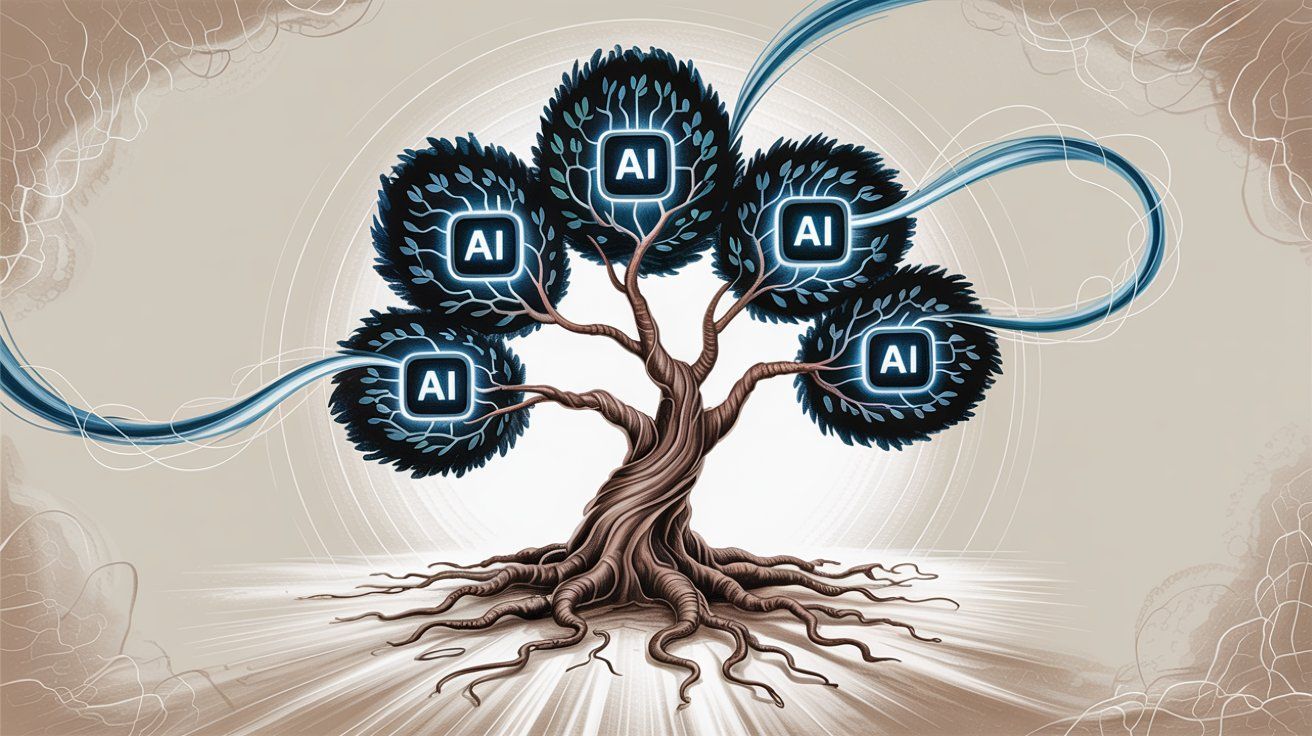
In simple terms, an AI agent is an advanced chatbot that can make decisions and take actions to achieve a user's goal, not just have a Q&A dialogue.
For example, a travel agent bot that can research flights, compare options, book one for you, and then remind you to check in through a conversation. Under the hood, these agents use powerful LLMs and frameworks that let them call APIs, remember conversation history, and self-correct.
Several new frameworks have popped up to support building these agents:
LangChain: An open-source framework that has quickly become essential for developers working with LLMs. LangChain provides a way to chain together prompts, manage conversational memory, and interface LLMs with external tools (APIs, databases). It essentially helps orchestrate an LLM to go beyond text, like calling a calculator for math, or a web search for information.
AutoGPT and BabyAGI: These are experimental agent frameworks where an AI can spawn tasks for itself. For example, you tell AutoGPT a goal ("research and write a report on chatbot trends") and it will generate its own to-do list and iterate through using the OpenAI API.
Microsoft Semantic Kernel: An SDK for building AI apps that integrate LLMs with memory and planning. These tools aim to simplify the creation of agents that can juggle multiple skills.
Emerging Platforms: There are emerging platforms that provide an environment to design autonomous agents with a drag-and-drop interface for selecting what tools or data the agent can access.
These frameworks are enabling a new class of chatbot that's far more powerful and flexible. Instead of a bot that only answers what it was explicitly programmed for, an AI agent could solve novel user requests by itself.
For instance, rather than predefining answers about your store's return policy, an AI agent could be given access to your knowledge base and it will generate an answer on the fly, or even fill out a return form on behalf of the customer by interacting with your system's API.
That said, building with AI agents also brings challenges: ensuring the AI doesn't go off-track (the "hallucination" problem where it makes up facts), keeping it secure (you don't want it calling unauthorized APIs), and maintaining consistency in brand voice and accuracy.
Bottom line: If your goal is to create a very dynamic, intelligent chatbot that can handle a wide variety of unanticipated tasks, you should explore these new frameworks. They represent the future of chatbots (often called Generative AI bots or LLM-powered agents).
Many companies are adopting a hybrid approach: using traditional frameworks for well-defined tasks (ensuring reliability) and adding an LLM agent component for open-ended queries or creative responses.
This is exactly where Spur comes in. Spur's platform emphasizes "Actionable AI", which resonates with this trend. These are bots that don't just answer questions, but take actions by connecting to external systems.
With Spur, your AI agent can:
• Check inventory levels and quote availability
• Track orders in Shopify, WooCommerce, or custom e-commerce systems
• Recover abandoned carts by sending WhatsApp follow-ups
• Book appointments by connecting to your scheduling system
• Qualify leads through Instagram DM conversations
• Route complex queries to human agents in a shared inbox
The key difference from traditional frameworks? You don't need to code this from scratch. Spur's visual automation builder and Custom AI Actions let you connect your chatbot to any backend API via webhooks and HTTP requests, all without writing Python or Node.js code.
You train the AI agent on your knowledge base (unlike some platforms where AI add-ons can't be trained on your own data), deploy across WhatsApp, Instagram, Facebook Messenger, and live chat from a single interface, and start getting actionable results in hours instead of months.
This is the power of combining frameworks with AI agents in 2025: instant support that can actually solve problems, not just acknowledge them. Start your free 7-day trial to see how actionable AI works in practice.
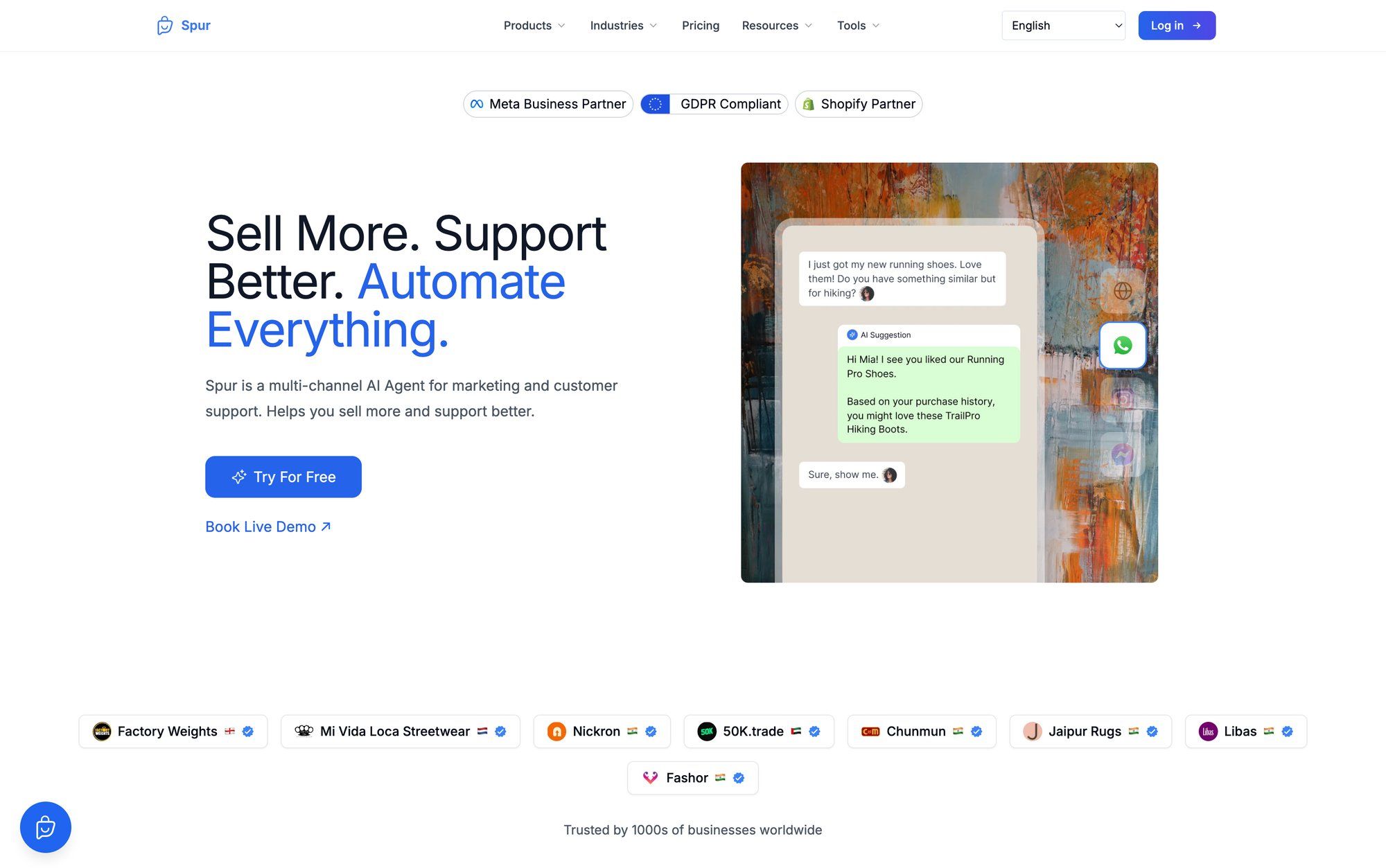
With so many options on the table, how do you narrow it down to the one that best suits your project? Here's a structured approach to evaluating and selecting a chatbot development framework:
Start by clearly identifying what you want your chatbot to do. Is it a customer support FAQ bot? A transactional bot that hooks into e-commerce? A lead generation conversational agent on social media?
Different frameworks excel at different things. For instance, a simple FAQ bot could even be done with a Q&A platform or a basic rule-based bot, whereas an AI sales assistant might need an advanced NLP framework or agent capabilities.
Also consider if your bot needs to support voice, multiple languages, or high volumes. Those factors will influence your choice.
This is a crucial factor. If you have a strong development team (especially with specific language skills like Python or Node.js), an open-source framework like Rasa can be a great fit. You'll have the capability to customize and troubleshoot it.
If you lack in-house developers or NLP expertise, a fully-managed platform (Dialogflow, Watson, etc.) or a simpler framework might lead to success faster.
Have in-house devs? Go with Rasa or Microsoft Bot Framework. Relying on marketers or business analysts? A more guided platform will get you moving without needing a computer science degree.
Real talk: If you're a marketing team trying to get a WhatsApp or Instagram bot live quickly, spending months learning Rasa isn't practical. That's where platforms like Spur become invaluable. You get the power of actionable AI without needing engineering resources.
Do you have strict regulations (GDPR, HIPAA) or internal policies that require the data to remain on-premise or in a specific region? If yes, frameworks like Rasa (self-hosted) or an enterprise solution with on-prem option might be the only viable ones.
If you're okay with cloud as long as it's secure, any of the major providers could work. For example, Spur hosts servers and databases in Frankfurt, Germany and sets the data_localization_region to Europe for WhatsApp Cloud API customers, addressing GDPR requirements.
Financial institutions often lean towards Watson or Microsoft's Bot Framework due to enterprise trust, or Rasa for on-prem. In contrast, a startup might be fine with a cloud API like Wit.ai or ChatGPT API.
Make a checklist of systems and channels your chatbot needs to connect with. If it must work on WhatsApp, Instagram, and web chat, ensure the framework supports those channels either natively or through connectors.
For instance, Spur provides native integrations for Shopify, WooCommerce, Razorpay, Stripe, Shiprocket, and more. If your chatbot revolves around order data, having pre-built e-commerce integrations can save weeks of development time.
If a framework easily plugs into your existing tech stack, that's a big plus.
If your chatbot needs to handle complex language input, compare the NLP strength of candidates. Cloud NLP engines (Dialogflow, Watson, LUIS, etc.) are generally high-accuracy without much effort on your part.
Open-source ones like Rasa can be very good but might require more training data and tuning. Look at whether you need features like sentiment analysis, entity extraction beyond simple terms, or support for slang/colloquialisms common in your user base.
Also, multi-language support is key if you have a global audience. For example, Dialogflow supports 20+ languages natively, whereas some frameworks might require additional work to handle languages other than English.
An often overlooked but vital criterion is the quality of documentation and community help for the framework. Read through the getting-started guides. Are they clear? Is there a forum or Stack Overflow activity for it?
Well-maintained documentation and a responsive community can significantly smooth out your development journey. As a test, search for a few common issues (like " webhook error") and see if there are solutions online. If a framework has scant documentation and you don't have expert knowledge, be wary.
Once you have a couple of frontrunners, it's wise to do a quick prototype if possible. Build a simple hello-world bot or one sample use case in each framework.
This hands-on trial can reveal a lot. Maybe one has tools that you find intuitive, or maybe another shows better accuracy on understanding your sample queries. Also pay attention to development speed: did one approach require writing 500 lines of code for something that took 5 clicks in another tool?
Those differences matter depending on your timeline.
Think long-term. If your chatbot usage grows to tens of thousands of conversations a day, will the framework handle it? Check if there are known limits (some platforms have message quotas or rate limits).
For open-source, do you have a plan for scaling the servers? Also consider maintenance: frameworks with frequent updates mean you should budget time to upgrade and regression-test periodically.
Most of the top options we discussed have regular updates. Ensure you're comfortable keeping up with that pace.
Even though many frameworks are "free" or have a free tier, consider the total cost. Open-source isn't cost-free. You'll spend on developer hours and infrastructure. Managed services cost per use but save you some dev work.
Do a rough cost projection: "If we have 50,000 messages a month, Dialogflow will cost us X, Watson will cost Y, Rasa self-hosted will cost Z in server bills and one ML engineer's time."
This can often eliminate options that are out of budget or highlight the value of one approach over another. For instance, if you find Watson's ~$140/month plan covers your needs fully, that might be worth it for the support and features, versus spending similar money on cloud servers for an open-source solution.
If you need things like SLAs, dedicated support, or enterprise features (single sign-on, user roles, on-prem deployment), lean towards enterprise-focused frameworks (Watson, Kore.ai, MS Azure Bot, Rasa Enterprise) or platforms like Spur that offer dedicated account managers on higher plans.
For mission-critical customer-facing chatbots at a big company, having vendor support could be a lifesaver when something goes wrong. On the other hand, for an internal tool or a smaller scale bot, community support might suffice and save costs.
Here's a quick decision framework to match your situation with the right tool:
Your Situation | Best Framework Options | Why This Works |
|---|---|---|
Strong dev team + need max customization | Rasa, Microsoft Bot Framework | Full control, unlimited flexibility |
Dev team but prefer managed services | Dialogflow, Watson, Amazon Lex | Balance of power and convenience |
Marketing/business team, no devs | No-code with AI power | |
Voice-first requirements | Amazon Lex, Dialogflow, MS Bot Framework | Native speech capabilities |
Multi-language global bot | Dialogflow, Watson, Wit.ai | 20-80+ languages supported |
Strict on-premise/data privacy | Rasa, IBM Watson (on-prem) | Complete data control |
E-commerce WhatsApp/Instagram | Pre-built integrations | |
Free/low budget, dev resources | Rasa, Wit.ai + custom code | No licensing fees |
Enterprise scale, compliance | Watson, Kore.ai, MS Bot Framework | Enterprise features built-in |
In summary, success in choosing a framework comes from aligning it with your project's requirements and your team's capabilities. There's no one-size-fits-all answer. The "best" framework is the one that ticks your boxes in terms of functionality, feasibility, and future-proofing.
(For a quick comparison: Rasa vs Dialogflow? Rasa wins on privacy, customization, and on-prem control, while Dialogflow wins on ease of use, quick setup, and multi-channel cloud support. Such trade-offs are common, so know what matters most to you.)
A chatbot framework is a developer-oriented toolkit that requires coding (like Rasa, Microsoft Bot Framework). You build the bot from scratch with full control. A chatbot platform is a no-code or low-code solution (like Spur) that lets non-technical users create bots through visual interfaces and pre-built templates. Frameworks offer more flexibility. Platforms offer faster deployment.
For most frameworks (Rasa, Microsoft Bot Framework), yes, you need coding skills. Typically Python or Node.js, plus understanding of APIs and NLP concepts. Some frameworks offer visual builders that reduce coding for simple flows. If you don't have developers, consider platforms like Spur that provide no-code automation builders with the option to add custom logic via webhooks when needed.
For WhatsApp and Instagram, you need a framework or platform with official Meta integrations. Spur is purpose-built for WhatsApp Business API and Instagram automation, offering features like Comment-to-DM, Click-to-DM ads, abandoned cart recovery, and AI agents trained on your knowledge base. Developer frameworks like Dialogflow, Microsoft Bot Framework, or Rasa can also work with WhatsApp/Instagram but require custom connector development and Meta Business API integration work.
Yes, you can create hybrid systems. For example, you might use Wit.ai for NLP (intent detection) and BotKit for managing channels and conversation flow. Or use Rasa for on-premise dialog management while connecting to external services via APIs. Some teams even use Spur for their WhatsApp/Instagram bots (where speed and ease matter) and a custom Rasa build for complex internal systems. The key is ensuring the components integrate cleanly via APIs or webhooks.
Traditional chatbots follow pre-defined conversation flows and scripted responses. They're good for FAQs and simple tasks. AI agents (powered by LLMs like GPT-4, Claude, or Gemini) can understand natural language more flexibly, make decisions, and take actions by calling APIs or tools. For example, a traditional bot might answer "What's your return policy?" with a scripted response. An AI agent can understand the question, access your knowledge base, generate a custom answer, and even initiate a return request by connecting to your system. Spur's Actionable AI combines both approaches: structured automation for reliability plus AI intelligence for flexibility.
Open-source frameworks like Rasa are free to use (no licensing fees), but they're not free to run in production. You'll need to pay for:
• Server infrastructure (cloud or on-premise hosting)
• Developer time to build, customize, and maintain the bot
• Training data creation and model tuning
• Monitoring, security, and scaling costs
Often, the total cost of ownership for an open-source framework exceeds what you'd pay for a managed platform. You gain complete control, data ownership, and no per-message usage fees. Evaluate both the upfront investment and ongoing costs when deciding.
Most modern frameworks support integrations, either natively or through webhooks and APIs. For example, Spur has pre-built integrations for Shopify, WooCommerce, Razorpay, Stripe, and more. Microsoft Bot Framework, Dialogflow, and Rasa all support custom integrations via webhooks, REST APIs, or SDKs. The ease of integration varies. Platforms with pre-built connectors save weeks of development time compared to building custom integrations from scratch.
It depends on the framework's NLP capabilities. Dialogflow and Wit.ai support 20-80+ languages natively. Watson Assistant handles multiple languages with good accuracy. Amazon Lex is primarily English-focused (though expanding). For open-source frameworks like Rasa, you'll need to train models in each language and potentially use language-specific NLP libraries. If you need a multilingual chatbot quickly, cloud-based frameworks with built-in multi-language support are usually the fastest route.
It varies widely based on complexity:
• Simple FAQ bot (with a framework like Dialogflow): 1-2 weeks
• Custom conversational bot (with Rasa or Microsoft Bot Framework): 4-8 weeks
• Enterprise-grade multi-channel AI agent: 3-6 months
For comparison, no-code platforms like Spur can have you live in hours to days for standard use cases (abandoned cart recovery, Instagram DM automation, customer support bot). The trade-off is less low-level customization, but for most business use cases, the pre-built capabilities cover 80% of needs out of the box.
Yes, several do. Amazon Lex, Google Dialogflow, and Microsoft Bot Framework all have native speech recognition (ASR) and text-to-speech (TTS) capabilities. They can handle voice input (like phone calls or voice assistants) and respond with synthesized speech. Open-source frameworks like Rasa don't include voice capabilities natively, but you can integrate them with services like Google Speech-to-Text or Amazon Polly. If voice is a primary requirement (IVR systems, voice assistants), Lex and Dialogflow are the strongest out-of-the-box choices.
Building a chatbot in 2025 isn't just about picking a framework. It's about understanding the trade-offs between control and convenience, flexibility and speed, custom code and pre-built solutions.
The real question isn't "What's the best framework?" It's "What's the right framework for your specific situation, team, and goals?"
We've explored a wide range of chatbot development frameworks, from open-source powerhouses like Rasa to cloud-smart services like Dialogflow, Watson, Lex, and more. Each comes with its own philosophy and strengths: some give you total control at the cost of more code, while others speed you to a result but within their ecosystem's guardrails.
The key takeaway is that choosing the right framework is half the battle in chatbot development. Pick a tool that aligns with your needs in terms of features, team skillset, and strategic goals. If you select wisely, you'll set a strong foundation that can carry your conversational AI project from a small pilot to a scalable, enterprise-grade solution.
Don't be afraid to start simple and evolve. Many successful chatbot projects begin with a narrow scope on a straightforward platform, then migrate to more sophisticated frameworks as they expand.
If you're a development team with specific requirements and the expertise to build custom solutions, frameworks like Rasa or Microsoft Bot Framework give you the building blocks to create exactly what you need.
If you're a business team that needs results quickly without burning months on development, platforms like Spur deliver actionable AI agents that can:
• Handle customer support queries across WhatsApp, Instagram, Facebook, and live chat
• Track orders, recover abandoned carts, and send shipping updates
• Qualify leads through Instagram Comment-to-DM automation
• Route complex issues to human agents in a shared inbox
• Execute custom actions by connecting to any API or backend system
All without writing code.
Remember that a framework is just a tool. The real success of your chatbot will also depend on the effort you put into designing helpful dialogue, training the AI well, and continuously refining based on user feedback.
Frameworks provide the canvas and brushes, but you still have to paint the masterpiece.
Use the information in this guide as a compass to navigate the options, but always keep the user experience at the center of your decisions.
A well-designed chatbot, built on a solid framework foundation, can delight customers with instant support, boost your team's productivity by automating routine tasks, and ultimately drive value for your business around the clock.
Ready to see actionable AI in action? Start your free 7-day trial with Spur and deploy an AI agent across WhatsApp, Instagram, and live chat in hours, not months. No credit card required.
Here's to building chatbots that are not only technologically impressive, but genuinely useful and engaging for your users. With the rich selection of frameworks and the advent of powerful AI agents in 2025, the possibilities are immense. Good luck on your chatbot development journey!
